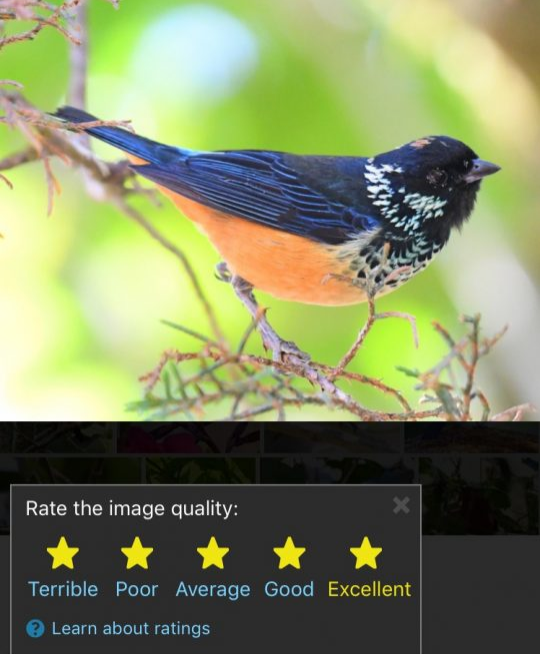With more than 2.5 million images already in the Macaulay Library/eBird media collection, and thousands more added every day, it’s important to be able to find what you’re looking for. To that end, we’ve recently enabled the capability for any logged-in eBird user to rate the quality of any piece of media in the collection. These combined ratings will allow us to bring the best images, sounds, and videos forward in the collection, and showcase your contributions to others in a new and better way. Using the ‘Search Photos and Sounds‘ tool in eBird or on the Macaulay Library, eBirders can now page through hundreds of images from around the world, and give each one a rating. The more ratings each image receives, the more useful its overall rank in the collection becomes.
Beautiful images and great sound recordings are hard to come by, and tagging these appropriately in the collection is important. While browsing images in eBird, you can now add a ‘star rating’ to any piece of media. To quickly work through a series of images, try using the convenient keyboard shortcuts enabled for this tool. Use your arrow keys to page through the images in the Search tool’s expanded ‘lightbox view’, and rate each image by using the number keys from 1-5. Warning: this activity can become addictive! Before getting started, please read our guidelines for rating photos and sound recordings.

You’ll also notice a new sort option when exploring media: Best Quality. The star ratings you provide for each piece of media now become a critical part of a new algorithm that brings the best photos, sounds, and videos forward in the collection when applying this sort.

Some images and sounds are great, some are not, and that’s okay. But remember: at eBird we’re interested in not just beautiful images of birds, but also in any image that provides evidence of a species’ occurrence. Sometimes it’s difficult to get great images of rare or unusual birds, but even marginal ones can provide irrefutable documentation, and are incredibly important for supporting the identification and occurrence of the reported species.
Even the “not-so-good” images are incredibly useful for training Merlin Photo ID and potentially for other research. While the new star rating process is meant to be a reflection of the quality of the media, please don’t let that dissuade you from providing your less than perfect images to the collection. In reality, most of the images we take aren’t 5-star quality. But each image we submit elevates the bird records we make from simple observational data to observational data with evidence–and that is critical! We thank you for your continued participation in eBird, and for sharing your images and sounds with the world!
Originally published on eBird.


